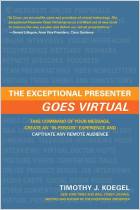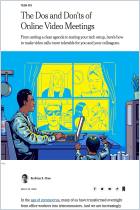Due to the pandemic, many white-collar employees now work from home. To collaborate, they must meet remotely. Co-authors Karin M. Reed and Joseph A. Allen explain the best way to organize and facilitate virtual meetings. Interestingly, Reed and Allen have never met face-to-face. They conducted all their co-authoring coordination virtually – concrete proof of how well remote meetings and online collaboration can work when all the elements come together.
Businesses once relied on face-to-face meetings, but now most meetings are virtual.
COVID-19 has been a game changer, sending people home from the office to work in relative isolation. Everything has gone virtual.The pandemic has radically altered how people connect, collaborate and meet.
Meetings serve many purposes, including making decisions, carrying out strategic planning, setting budgets and updating projects. Now, that white-collar workers often don’t share the same work space, they are unable to pop into each other’s offices to update agendas and discuss the latest information. As a result, more meetings are held for the purpose of catching up and sharing information.
Meetings take less time than before and involve fewer participants.
Even when people hold face-to-face meetings, the sessions have become shorter, as have telephone and video meetings. In-person meetings may take less time because they require masks. People don’t particularly like wearing masks, so they tend to rush through masked face-to-face meetings as quickly as possible.
Research indicates that...
Karin M. Reed is the CEO of Speaker Dynamics, a corporate-communications-training firm. Joseph A. Allen, PhD, is a professor of industrial and organizational psychology at the University of Utah.






















Comment on this summary or 开始讨论